1,5-dichlorohexamethyltrisiloxane
Modify Date: 2024-01-04 21:06:29

1,5-dichlorohexamethyltrisiloxane structure
|
Common Name | 1,5-dichlorohexamethyltrisiloxane | ||
|---|---|---|---|---|
| CAS Number | 3582-71-6 | Molecular Weight | 277.368 | |
| Density | 1.0±0.1 g/cm3 | Boiling Point | 184.0±0.0 °C at 760 mmHg | |
| Molecular Formula | C6H18Cl2O2Si3 | Melting Point | -53 °C | |
| MSDS | N/A | Flash Point | 53.3±10.8 °C | |
| Name | bis[[chloro(dimethyl)silyl]oxy]-dimethylsilane |
|---|---|
| Synonym | More Synonyms |
| Density | 1.0±0.1 g/cm3 |
|---|---|
| Boiling Point | 184.0±0.0 °C at 760 mmHg |
| Melting Point | -53 °C |
| Molecular Formula | C6H18Cl2O2Si3 |
| Molecular Weight | 277.368 |
| Flash Point | 53.3±10.8 °C |
| Exact Mass | 275.999176 |
| PSA | 18.46000 |
| LogP | 6.75 |
| Vapour Pressure | 1.0±0.3 mmHg at 25°C |
| Index of Refraction | 1.426 |
Synonym: Section 2 - COMPOSITION, INFORMATION ON INGREDIENTS
Risk Phrases: 34 Section 3 - HAZARDS IDENTIFICATION EMERGENCY OVERVIEW
Causes burns.Moisture sensitive. Potential Health Effects Eye: Causes eye burns. Skin: Causes skin burns. May cause dermatitis. Ingestion: Causes gastrointestinal tract burns. The toxicological properties of this substance have not been fully investigated. Inhalation: May cause irritation of the respiratory tract with burning pain in the nose and throat, coughing, wheezing, shortness of breath and pulmonary edema. Causes chemical burns to the respiratory tract. The toxicological properties of this substance have not been fully investigated. Inhalation may be fatal as a result of spasm, inflammation, edema of the larynx and bronchi, chemical pneumonitis and pulmonary edema. Chronic: Not available. Section 4 - FIRST AID MEASURES Eyes: Immediately flush eyes with plenty of water for at least 15 minutes, occasionally lifting the upper and lower eyelids. Get medical aid immediately. Skin: Get medical aid immediately. Immediately flush skin with plenty of water for at least 15 minutes while removing contaminated clothing and shoes. Ingestion: Do not induce vomiting. If victim is conscious and alert, give 2-4 cupfuls of milk or water. Get medical aid immediately. Inhalation: Remove from exposure and move to fresh air immediately. If not breathing, give artificial respiration. If breathing is difficult, give oxygen. Get medical aid. Notes to Physician: Section 5 - FIRE FIGHTING MEASURES General Information: As in any fire, wear a self-contained breathing apparatus in pressure-demand, MSHA/NIOSH (approved or equivalent), and full protective gear. Will burn if involved in a fire. Combustible liquid. Extinguishing Media: Use foam, dry chemical, or carbon dioxide. DO NOT USE WATER! Section 6 - ACCIDENTAL RELEASE MEASURES General Information: Use proper personal protective equipment as indicated in Section 8. Spills/Leaks: Absorb spill with inert material (e.g. vermiculite, sand or earth), then place in suitable container. Section 7 - HANDLING and STORAGE Handling: Do not breathe dust, vapor, mist, or gas. Do not get in eyes, on skin, or on clothing. Use only in a chemical fume hood. Storage: Store in a cool, dry place. Store in a tightly closed container. Corrosives area. Section 8 - EXPOSURE CONTROLS, PERSONAL PROTECTION Engineering Controls: Use adequate ventilation to keep airborne concentrations low. Exposure Limits CAS# 3582-71-6: Personal Protective Equipment Eyes: Not available. Skin: Wear appropriate protective gloves to prevent skin exposure. Clothing: Wear appropriate protective clothing to prevent skin exposure. Respirators: Follow the OSHA respirator regulations found in 29 CFR 1910.134 or European Standard EN 149. Use a NIOSH/MSHA or European Standard EN 149 approved respirator if exposure limits are exceeded or if irritation or other symptoms are experienced. Section 9 - PHYSICAL AND CHEMICAL PROPERTIES Physical State: Liquid Color: straw-colored - amber Odor: acrid odor pH: Not available. Vapor Pressure: 1 mm Hg @ 50 deg C Viscosity: Not available. Boiling Point: 184 deg C Freezing/Melting Point: -53 deg C Autoignition Temperature: Not available. Flash Point: 76 deg C ( 168.80 deg F) Explosion Limits, lower: Not available. Explosion Limits, upper: Not available. Decomposition Temperature: Solubility in water: Reacts. Specific Gravity/Density: 1.018 Molecular Formula: ClSi(CH3)2OSi(CH3)2OSi(CH3)2Cl Molecular Weight: 277.2873 Section 10 - STABILITY AND REACTIVITY Chemical Stability: Stable. Conditions to Avoid: Incompatible materials, contact with water, exposure to moist air or water. Incompatibilities with Other Materials: Strong oxidizing agents, strong bases, alcohols, amines. Hazardous Decomposition Products: Hydrogen chloride, carbon monoxide, carbon dioxide, oxides of silicon. Hazardous Polymerization: Will not occur. Section 11 - TOXICOLOGICAL INFORMATION RTECS#: CAS# 3582-71-6 unlisted. LD50/LC50: Not available. Carcinogenicity: 1,5-Dichlorohexamethyltrisiloxane - Not listed by ACGIH, IARC, or NTP. Section 12 - ECOLOGICAL INFORMATION Section 13 - DISPOSAL CONSIDERATIONS Dispose of in a manner consistent with federal, state, and local regulations. Section 14 - TRANSPORT INFORMATION IATA No information available. IMO No information available. RID/ADR No information available. Section 15 - REGULATORY INFORMATION European/International Regulations European Labeling in Accordance with EC Directives Hazard Symbols: C Risk Phrases: R 34 Causes burns. Safety Phrases: S 25 Avoid contact with eyes. S 36/37/39 Wear suitable protective clothing, gloves and eye/face protection. S 45 In case of accident or if you feel unwell, seek medical advice immediately (show the label where possible). WGK (Water Danger/Protection) CAS# 3582-71-6: No information available. Canada CAS# 3582-71-6 is listed on Canada's NDSL List. CAS# 3582-71-6 is not listed on Canada's Ingredient Disclosure List. US FEDERAL TSCA CAS# 3582-71-6 is listed on the TSCA inventory. SECTION 16 - ADDITIONAL INFORMATION N/A |
| Hazard Codes | C: Corrosive; |
|---|---|
| Risk Phrases | R34 |
| Safety Phrases | S26-S28-S36/37/39-S45 |
| RIDADR | UN 2987 8/PG 2 |
| WGK Germany | 3 |
| HS Code | 2934999090 |
| Precursor 7 | |
|---|---|
| DownStream 10 | |
| HS Code | 2934999090 |
|---|---|
| Summary | 2934999090. other heterocyclic compounds. VAT:17.0%. Tax rebate rate:13.0%. . MFN tariff:6.5%. General tariff:20.0% |
| Trisiloxane, 1,5-dichloro-1,1,3,3,5,5-hexamethyl- |
| 1,5-Dichloro-1,1,3,3,5,5-hexamethyl disiloxane |
| Trisiloxane,1,5-dichloro-1,1,3,3,5,5-hexamethyl |
| 1,3-dichloro hexamethyl trisiloxane |
| MFCD00045147 |
| hexamethyl-1,5-dichlorotrisiloxane |
| EINECS 222-707-5 |
| 1,5-Dichloro-1,1,3,3,5,5-hexamethyltrisiloxane |
| 1,5-dichlorohexamethyltrisiloxane |
| 1,1,3,3,5,5-hexamethyldichlorotrisiloxane |
| 1,5-Dichlor-1,1,3,3,5,5-hexamethyltrisiloxan |
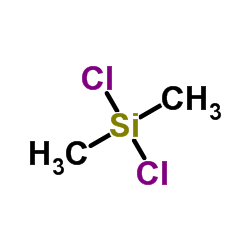 CAS#:75-78-5
CAS#:75-78-5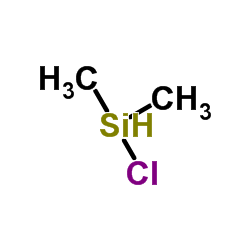 CAS#:1066-35-9
CAS#:1066-35-9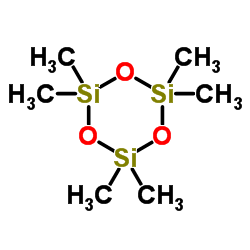 CAS#:541-05-9
CAS#:541-05-9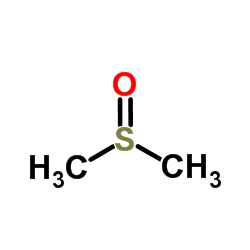 CAS#:67-68-5
CAS#:67-68-5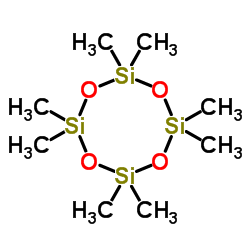 CAS#:556-67-2
CAS#:556-67-2 CAS#:1825-69-0
CAS#:1825-69-0 CAS#:75-36-5
CAS#:75-36-5![chloro-[dimethyl(trimethylsilyloxy)silyl]oxy-dimethylsilane structure](https://image.chemsrc.com/caspic/171/18297-87-5.png) CAS#:18297-87-5
CAS#:18297-87-5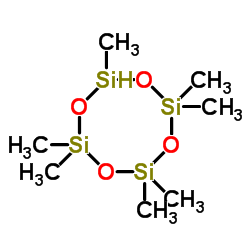 CAS#:15721-05-8
CAS#:15721-05-8 CAS#:17882-66-5
CAS#:17882-66-5 CAS#:3663-50-1
CAS#:3663-50-1 CAS#:7418-21-5
CAS#:7418-21-5 CAS#:18089-84-4
CAS#:18089-84-4![N-[[[diethylamino(dimethyl)silyl]oxy-dimethylsilyl]oxy-dimethylsilyl]-N-ethylethanamine structure](https://image.chemsrc.com/caspic/475/4766-77-2.png) CAS#:4766-77-2
CAS#:4766-77-2![acetic acid,bis[[hydroxy(dimethyl)silyl]oxy]-dimethylsilane structure](https://image.chemsrc.com/caspic/191/5314-59-0.png) CAS#:5314-59-0
CAS#:5314-59-0![[[[[[dimethyl-(trimethylsilylamino)silyl]oxy-dimethylsilyl]oxy-dimethylsilyl]amino]-dimethylsilyl]methane structure](https://image.chemsrc.com/caspic/211/62614-00-0.png) CAS#:62614-00-0
CAS#:62614-00-0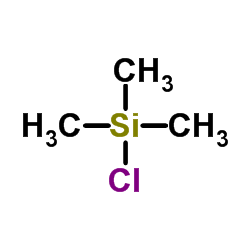 CAS#:75-77-4
CAS#:75-77-4